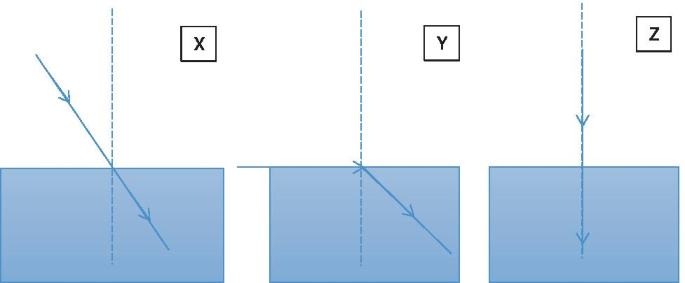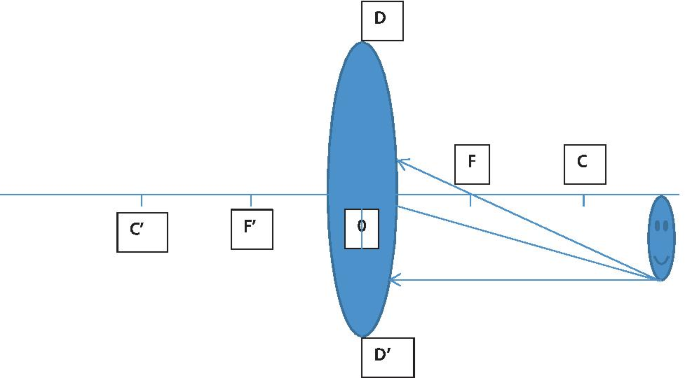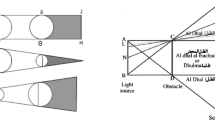Abstract
In this study, we used a research tool for measuring students’ conceptual understanding in optics, the Geometrical Optics Conceptual Understanding Test-2 (GOCUT-2), to evaluate the impact of supplementing classroom instruction with laboratory experiments, PhET simulations, or YouTube videos. This study involved students from public, urban secondary schools in Rwanda. Preliminary findings from the study indicate that these instructional resources did impact student conceptual understanding, and this impact is not uniform across all topics covered in geometric optics. A MANOVA demonstrated that learning outcomes were best for students who combined traditional physics labs with digital tools. This analysis also indicates that schools, where physics laboratories were most used, were more likely to exhibit greater conceptual understanding. We observed similar increases when PhET simulations and YouTube video resources were used together. In each case, students still showed some gaps related to drawing and interpreting images formed by lenses. We recommend that teachers supplement the geometric optics curriculum with open educational resources (OERs), including PhET simulations and YouTube videos.





Similar content being viewed by others
References
Afriani, T., & Agustin, R. R. (2019). The effect of guided inquiry laboratory activity with video embedded on students’ understanding and motivation in learning light and optics. Journal of Science Learning, 2(3), 79–84. https://doi.org/10.17509/jsl.v2i3.15144
Chu, H. E., Treagust, D. F., & Chandrasegaran, A. L. (2009). A stratified study of students’ understanding of basic optics concepts in different contexts using two-tier multiple-choice items. Research in Science & Technological Education, 27(3), 253–265. https://doi.org/10.1080/02635140903162553
Çıldır, S. (2016). Physics teacher candidates’ opinions on fiber optics and new technologies in this field. Eurasia Journal of Mathematics, Science & Technology Education, 12(3), 539–547. https://doi.org/10.12973/iser.2016.2002a
Cobern, W. W. (1996). Worldview theory and conceptual change in science education. Science Education, 80(5), 579–610. Retrieved from http://scholarworks.wmich.edu/science_slcsp/15
Durmuş, J., & Bayraktar, Ş. (2010). Effects of conceptual change texts and laboratory experiments on fourth grade students’ understanding of matter and change concepts. Journal of Science Education and Technology, 19(5), 498–504. https://doi.org/10.1007/s10956-010-9216-9
Favale, F., & Bondani, M. (2014). Misconceptions about optics: An effect of misleading explanations? 12th Education and Training in Optics and Photonics Conference, (July 2013). https://doi.org/10.1117/12.2070520
Fraenkel, J. R., Wallen, N. E., & Hyun, H. H. (2012). How to design and evaluate research in education. (8th ed.). McGraw Hill.
Härtel, H. (2000). XyZET: A simulation program for physics teaching. Journal of Science Education and Technology, 9(3), 275–286. https://doi.org/10.1023/A:1009499702274
Kearney, M. (2004). Multimedia predict-observe-explain social constructivist learning environment. Research in Science Education, 34(4), 427–453. https://doi.org/10.1007/s11165-004-8795-y
Laws, P. W. (2008). A lens into the world. AAPT Interactions, 38(1), 20–23.
Nakhleh, M. B., & Krajcik, J. S. (1994). Influence on levels of information as presented by different technologies on students’ understanding of acid, base, and pH concepts. Journal of Research in Science Teaching, 31(10), 1077–1096. https://doi.org/10.1002/tea.3660311004
Ndihokubwayo, K., Shimizu, K., Ikeda, H., & Baba, T. (2019). An evaluation of the effect of the improvised experiments on student-teachers’ conception of static Electricity. LWATI: A Journal of Contemporary Research, 16(1), 55–73. Retrieved from https://www.ajol.info/index.php/lwati/article/view/185967
Ndihokubwayo, K., Uwamahoro, J., & Ndayambaje, I. (2020a). Effectiveness of PhET simulations and YouTube videos to improve the learning of optics in Rwandan secondary schools. African Journal of Research in Mathematics, Science and Technology Education, 24(2), 253–265. https://doi.org/10.1080/18117295.2020.1818042
Ndihokubwayo, K., Uwamahoro, J., & Ndayambaje, I. (2020b). Implementation of the competence-based learning in Rwandan physics classrooms: First assessment based on the reformed teaching observation protocol. EURASIA Journal of Mathematics, Science and Technology Education, 16(9), 1–8. https://doi.org/10.29333/ejmste/8395
Ndihokubwayo, K., Uwamahoro, J., Ndayambaje, I., & Ralph, M. (2020). Light phenomena conceptual assessment: An inventory tool for teachers. Physics Education, 55(3), 035009. https://doi.org/10.1088/1361-6552/ab6f20
Pompea, S. M., & Stepp, L. (1995). Great ideas for teaching optics. International Conference on Education in Optics, 2525, 168–172. https://doi.org/10.1117/12.224009
Posner, G. J., Strike, K. A., Hewson, P. W., & Gertzog, W. A. (1982). Accomodation of scientific conception towards conceptual change theory. Science Education, 66(2), 211–227.
Pundak, D., & Rozner, S. (2008). Empowering engineering college staff to adopt active learning methods. Journal of Science Education and Technology, 17(2), 152–163. https://doi.org/10.1007/s10956-007-9057-3
Ramma, Y., Bholoa, A., Watts, M., & Nadal, P. S. (2017). Teaching and learning physics using technology: Making a case for the affective domain. Education Inquiry, 9(2), 210–236. https://doi.org/10.1080/20004508.2017.1343606
Rates, C. A., Mulvey, B. K., & Feldon, D. F. (2016). Promoting conceptual change for complex systems understanding: Outcomes of an agent-based participatory simulation. Journal of Science Education and Technology, 25(4), 610–627. https://doi.org/10.1007/s10956-016-9616-6
Sokoloff, D. R. (2007). Active learning of introductory optics: Interactive lecture demonstrations and optics magic tricks. In ducation and Training in Optics and Photonics, OSA Technical Digest Series (Optical Society of America, 2007). https://doi.org/10.1364/ETOP.2007.EWA2
Sullivan, G. M., & Feinn, R. (2012). Using effect size—or why the P value is not enough. Journal of Graduate Medical Education, 4(3), 279–282. https://doi.org/10.4300/jgme-d-12-00156.1
Tarhan, L., & Sesen, B. A. (2010). Investigation the effectiveness of laboratory works related to “ acids and bases ” on learning achievements and attitudes toward laboratory. Procedia Social and Behavioral Sciences, 2(2), 2631–2636. https://doi.org/10.1016/j.sbspro.2010.03.385
Acknowledgements
We want to express our gratitude to Dr. Mugabo Rugema Leon, University of Rwanda College of Education (URCE), and Dr. Mathew S. Richard, University of Kansas (KU), for their validation reports, GOCUT. The authors acknowledge teachers and students who participated in this study. To the cited works, researchers are also acknowledged.
Funding
The authors got full financial support from the African Centre of Excellence for Innovative Teaching and Learning Mathematics and Science (ACEITLMS) to carry out this research.
Author information
Authors and Affiliations
Corresponding author
Ethics declarations
Ethics Approval
The research was conducted after the research and innovation unit in University A has reviewed our proposal and provided an ethical clearance. The present study does not violate ethical research standards.
Consent to Participate
All teachers and students who participated in this study agreed to participate voluntarily and signed an informed consent form.
Consent for Publication
This article has been submitted solely to the Journal of Science Education and Technology (JOST) for review and publication. Thus, we handle rights to the journal for review and publish the manuscript.
Conflict of Interest
The authors declare no competing interests.
Additional information
Publisher's Note
Springer Nature remains neutral with regard to jurisdictional claims in published maps and institutional affiliations.
Appendices
Appendix 1. Geometric Optics Conceptual Understanding Test-2 (GOCUT-2)
-
1.
Some houses have one-way mirrors in windows. When you are inside, you can see someone walking outside the house, but he/she only sees his/her image in a mirror and can’t see you. This is because of a one-way mirror,
-
A
Reflects some of the light that falls on it and lets the rest of the light pass-through
-
B
Refracts some of the light that falls on it and lets the rest of the light pass-through
-
C
Reflects all of the light that falls on it and no light pass-through
-
D
No answer is correct
-
2.
Refractive index n of a substance is the ratio of the speed of light in a vacuum to its speed in that substance. Why is the refractive index of glass more than that of air?
-
A
Air is denser than glass
-
B
Glass is denser than air
-
C
Glass is bigger than air
-
D
Air and glass have the same density
-
3.
In the following figures X, Y, and Z below, a narrow beam of light strikes the water medium of refractive index n2 = 1.33 from the air medium of refractive index n1 = 1.

Select the situations which will never happen:
-
A
X, Y, and Z Why? …………..…………………………………………………
-
B
X and Y Why? …………..………………………………………………
-
C
Y and Z Why? …………..………………………………………………
-
D
X and Z Why? ………………………………………………………….
-
4.
When the object is viewed from more dense medium like glass to less dense medium like air, to bounce back into the glass, the angle of incidence should be,
-
A
the angle of refraction in the air is 900)
-
B
Smaller than the critical angle
-
C
More than the critical angle
-
D
No answer is correct
-
5.
Where should you be to observe a rainbow from?
-
A
You are between the sunlight and the raindrops
-
B
The raindrops are between the sunlight and you
-
C
The sunlight is between you and the raindrops
-
D
You are above the ocean
-
6.
A representation of a converging lens in front of the object is represented on the figure below:

Connect the rays from an object and draw the image on the other side of the lens.
-
7.
From the figure in question 13, if we reduce the diameter of the lens (DD'),
-
A
The clarity and size of the image will not change
-
B
The clarity and size of the image will definitely change
-
C
The image will be blurred and its size will not change
-
D
The image will be blurred and its size will change
-
8.
From the figure in question 13, if we reduce the curvature radius (0C), the lens will get
-
A
Thicker in the center causing the image to be smaller than the object
-
B
Thicker in the center causing the image to be bigger than the object
-
C
Thinner in the center causing the image to be smaller than the object
-
D
Thinner in the center causing the image to be bigger than the object
-
9.
From the figure in question 13, if we replace the lens with the one with small refractive index (n),
-
A
The image will be smaller than the object
-
B
The image will be bigger than the object
-
C
The image will be the same size as the object
-
D
No answer is correct
-
10.
From the figure in question 13, because of the small and real image that can be formed on a piece of film, a camera working principle is applied when,
-
A
The object is beyond C'
-
B
The object is beyond C
-
C
The object is before C
-
D
The object is before C'
-
11.
From the figure in question 13, if we replace the lens with a diverging lens (concave lens), in order to see an image of the object, the object should be,
-
A
At C or at F
-
B
Between C and F
-
C
Beyond C or between Lens and F
-
D
A and B are correct
-
12.
Why do some people not be able to see near objects clearly?
-
A
Their eyes have got an injury, therefore, they cannot accommodate all light rays
-
B
The rays from an object are focused behind the eye retina, so they see a blurred image
-
C
This is due to either their eye lens is too thick or the retina is too far away from the eye lens
-
D
A and C are correct
-
13.
Convex lenses so that they diverge the rays before entering the eyes
-
A
Convex lenses so that they diverge the rays before entering the eyes
-
B
Convex lenses so that they converge the rays before entering the eyes
-
C
Concave lenses so that they diverge the rays before entering the eyes
-
D
Concave lenses so that they diverge the rays after entering the eyes
-
14.
Why is a concave lens used as peep-holes indoors to see someone knocking at the door?
-
A
To get a positive magnified image of someone knocking at the door
-
B
To get a minimized image of someone knocking at the door
-
C
To get an object which is formed at the other side of the image
-
D
To get an image which is formed at the other side of the door
-
15.
Why is image upside down in optical instruments? This is because the lenses used in these optical instruments have a,
-
A
Spherical surface, hence making light propagating in a straight line to cross each other
-
B
Spherical surface, hence making rays of light to propagate in a parallel direction
-
C
Flat surface, hence making rays of light to propagate in a parallel direction
-
D
Flat surface, hence making rays of light to propagate in a perpendicular direction
-
16.
How can you correct an upside-down image in a telescope?
-
A
A combination of two different lenses will erect image
-
B
A combination of a mirror and a lens will upright image
-
C
A combination of a mirror and a lens will erect image
-
D
A combination of two same lenses will erect image
Answer Key: A (1), B (2), B (3), C (4), A (5), C (7), A (8), B (9), B (10), C (11), B (12), C (13), B (14), A (15), A (16).
Appendix 2
Rights and permissions
About this article
Cite this article
Uwamahoro, J., Ndihokubwayo, K., Ralph, M. et al. Physics Students’ Conceptual Understanding of Geometric Optics: Revisited Analysis. J Sci Educ Technol 30, 706–718 (2021). https://doi.org/10.1007/s10956-021-09913-4
Accepted:
Published:
Issue Date:
DOI: https://doi.org/10.1007/s10956-021-09913-4






